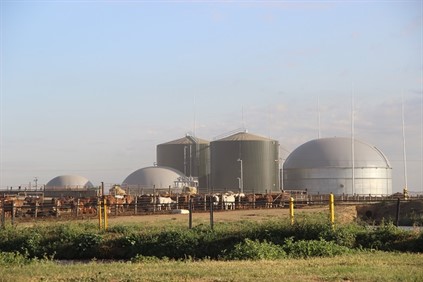

Bronkhorstspruit, South Africa: Forty minutes east of South Africa's capital Pretoria, amid the lowing of thousands of cows and the strong stink of dung, a small factory has taken on the challenge of turning manure into energy.
"Every day, 120 tonnes of manure and 66 tonnes of recycled paper are mixed in one of these tanks," Bio2Watt project manager Steven Roux said in the shadow of a looming 9,000 cubic metre vat.
Also in the tank alongside the bacteria-rich dung is a steaming mix of old yoghurt, fruit juice and abattoir waste, which bubbles away at 52 degrees Celsius for 22 days.
"It's basically a huge living organism," explained project creator Sean Thomas. "While the bacteria is breaking down the waste, it's producing methane gas, which is our primary fuel for our combustion engine -- similar to that of a car."
The engine, in turn, is connected to an alternator.
The result: 4.4 megawatts (MW) of electricity, enough to power a village of about 1,500 people, said Thomas.
A Briton now settled in South Africa, it took Thomas eight years to go from bright idea to power production, which the factory achieved in mid-October.
On the farm next door, 40,000 cattle roamed about, chewing the cud that would become Thomas' brown gold.
The dung contributes only about a quarter of Bio2Watt's output.
But in volume, it makes up 60 percent of the potent sludge ripening in the hot tanks, containing the vital bacteria needed to break the waste down into methane gas -- the first project of its kind in South Africa.
"There are other projects like this coming up now, but I think we created a precedent," said Thomas.
Bio2Watt's 4.4 MW is a mere blip compared to the 40,000 MW of the national power provider Eskom -- but it does offer a decentralised solution in a country where 85 percent of electricity comes from ageing and failing centralised coal-fired power stations.
AFP




